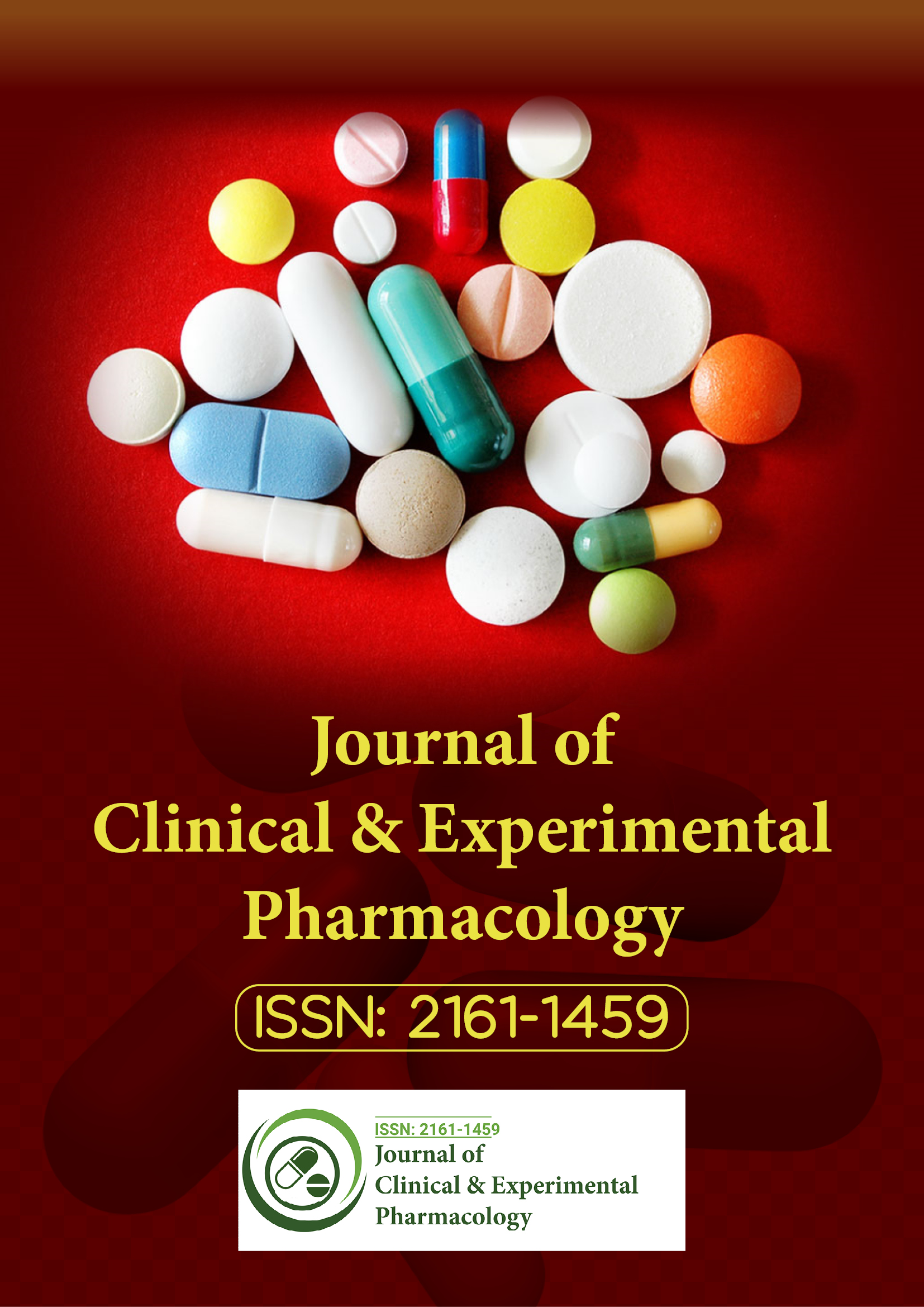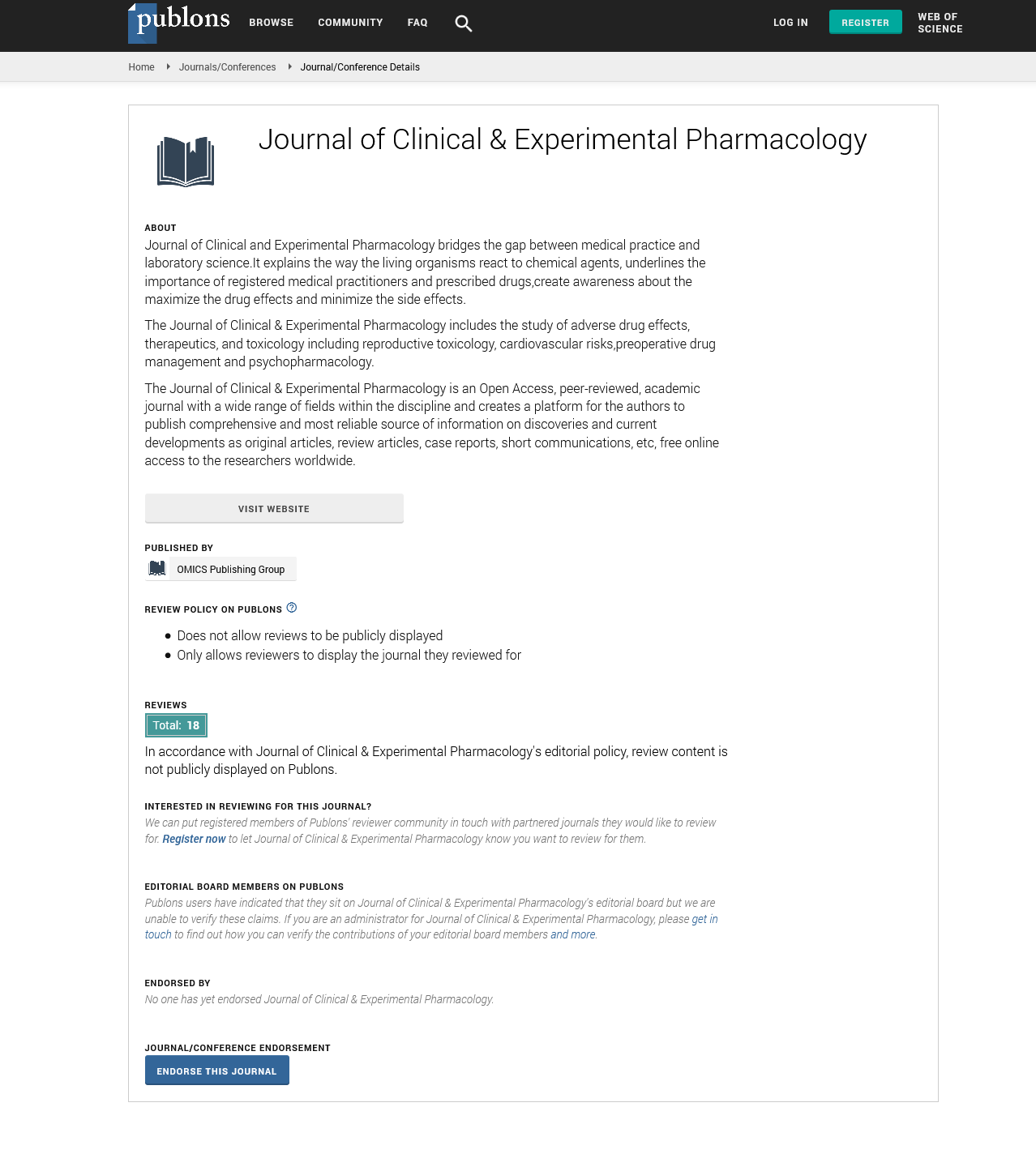Indexed In
- Open J Gate
- Genamics JournalSeek
- China National Knowledge Infrastructure (CNKI)
- Ulrich's Periodicals Directory
- RefSeek
- Hamdard University
- EBSCO A-Z
- OCLC- WorldCat
- Publons
- Google Scholar
Useful Links
Share This Page
Journal Flyer

Open Access Journals
- Agri and Aquaculture
- Biochemistry
- Bioinformatics & Systems Biology
- Business & Management
- Chemistry
- Clinical Sciences
- Engineering
- Food & Nutrition
- General Science
- Genetics & Molecular Biology
- Immunology & Microbiology
- Medical Sciences
- Neuroscience & Psychology
- Nursing & Health Care
- Pharmaceutical Sciences
Primaquine-chitosan nanoparticles enhance drug delivery to liver tissue in mice
World Congress on Pharmacology
July 20-22, 2015 Brisbane, Australia
Putrya Hawa, Purwantyastuti and H J Freisleben
Posters-Accepted Abstracts: Clin Exp Pharmacol
Abstract:
Chitosan-based nanoparticles have gained attention as drug delivery carriers because of their stability, low toxicity and simple and mild preparation method. Moreover, they provide versatile routes of administration. The aim of this study was to prepare primaquine-loaded chitosan nanoparticles to enhance drug transport to the liver. Primaquine-loaded chitosan nanoparticles were prepared by using ionic gelation. Nanoparticles were characterized by particle size distribution, entrapment efficiency, zeta potential and morphology: the results of two preparation methods out of 20 variations tested are presented. The characterization of preparation method XVII exhibited a peak of particle size distribution at 248.8 nm, peak width of 29.61 nm,while method XX had its peak of particle size distribution at 47.9±13.7 nm, polydispersity index of 0.313 and a zeta potential of +18.5 mV. From all preparation methods, XVII exerted best entrapment efficiency of 54.7% and was therefore chosen pharmacokinetic comparison. Conventional primaquine and primaquine-loaded chitosan nanoparticles were administered orally to rats in order to compare the pharmacokinetic profiles.In rats,we observed 2-2.5 times smaller primaquine plasma concentrations with nanoparticles than with conventional primaquine, but 3 times higher concentration in the liver. This study exhibited that primaquine-loaded chitosan nanoparticles successfully enhanced drug transport toliver.

